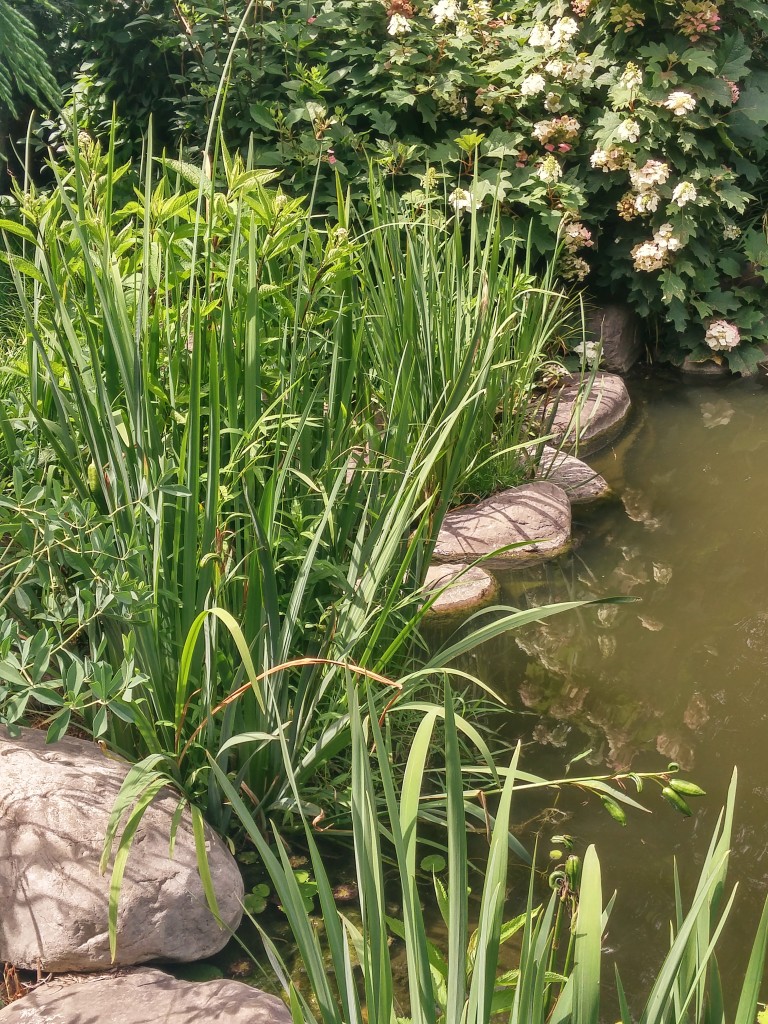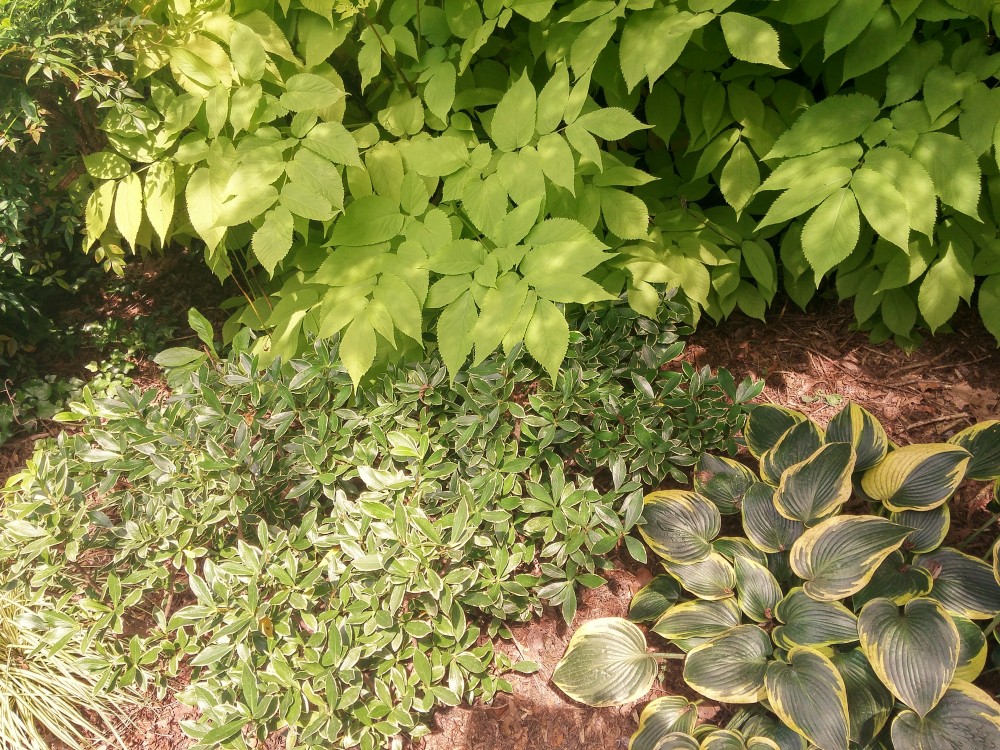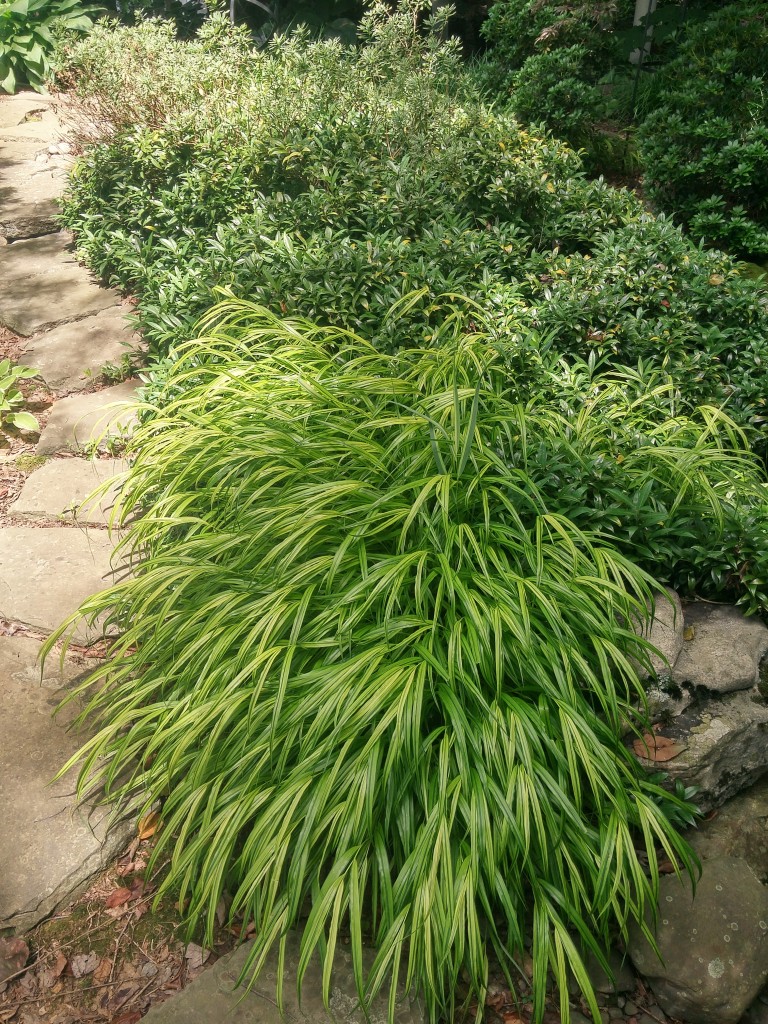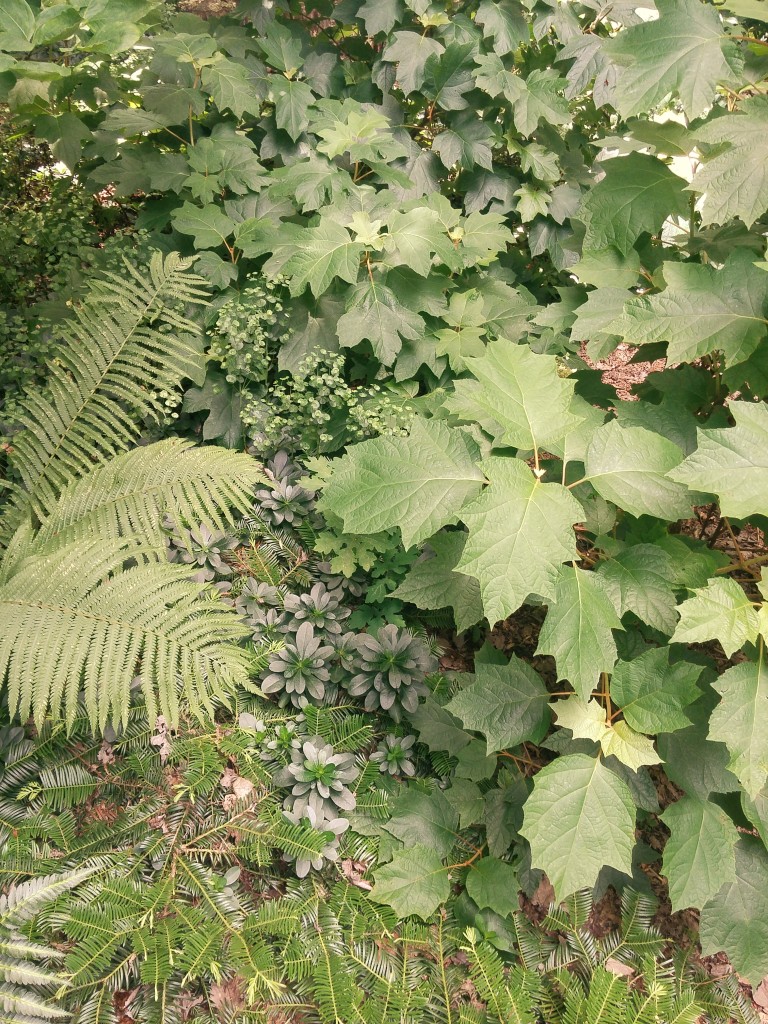Clumps of Japanese iris (Iris ensata) at the pond’s edge have been infiltrated by stilt grass, seedlings of Joe Pye weed (Eutrochium purpureum, which, for now are tolerated because they mature long after the irises have faded), and a jumble of other weeds that cannot be identified. Difficulties in access to remove weeds along the pond’s edge are complicated by the presence of Northern Brown water snakes that are known to frequent these spots. Though the snakes are not poisonous, there is hesitation by the gardener in invading the lair of any beast that might react defensively.
Long ago, as the garden grew in dimension, the idea of a weed free, or even a low maintenance garden was abandoned, and despite efforts to cover every square inch of ground with one plant or another, regular labor is required or the garden will be quickly overrun. By plucking a weed here and there on strolls through the garden, there is rarely a need for long hours spent doing nothing but weeding, but there is never a time the gardener is pleased that this task is under control.
Some gardeners write that weeding is a part of the process, and claim they enjoy every moment. I do not, and cannot imagine they are truthful. I only hope to reach a point, someday, where maintenance is manageable without always feeling that I am three weeks behind. After three decades in this garden, much work remains to be done before it is completely satisfactory, and probably, this will never be accomplished.
The best chance to minimize labor, as I’ve experienced, is to increase the percentage of the garden that is in shade. While there are downsides to this, I am certain I could be content with a garden completely shaded by Japanese maples, dogwoods, and redbuds. Compared to ten and twenty years ago, there has been significant progress in this direction.
There are varying degrees of shade in the garden, and a range from moderately damp to a large area of dry shade. There is no formula I’ve discovered except experience to determine which plants will thrive in, or tolerate the varied conditions. A plant that grows contentedly in one spot of shade might struggle a few feet further into the deeper shade or part sun, or with more or less competition from roots of maples and tulip poplars.
While I hesitate to recommend plants that might not suit a particular spot, the gardener looking to decrease maintenance should first consider ones that fill spaces rather than leaving open areas that will be filled by opportunists (weeds). This can be plants that grow along the ground, or shrubs that shade the ground. The gardener will note that in either circumstance there will be fewer weeds, and with low growing plants the yearly task of adding a layer of new mulch can possibly be eliminated. Every minute of labor saved in this garden is cherished.
Thank you for all your insight and lessons. Please continue as I really appreciate the road you travel. Nancy H
What a great plan to fill with a plant rather than leave space for weeds love the post!